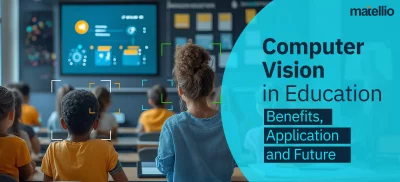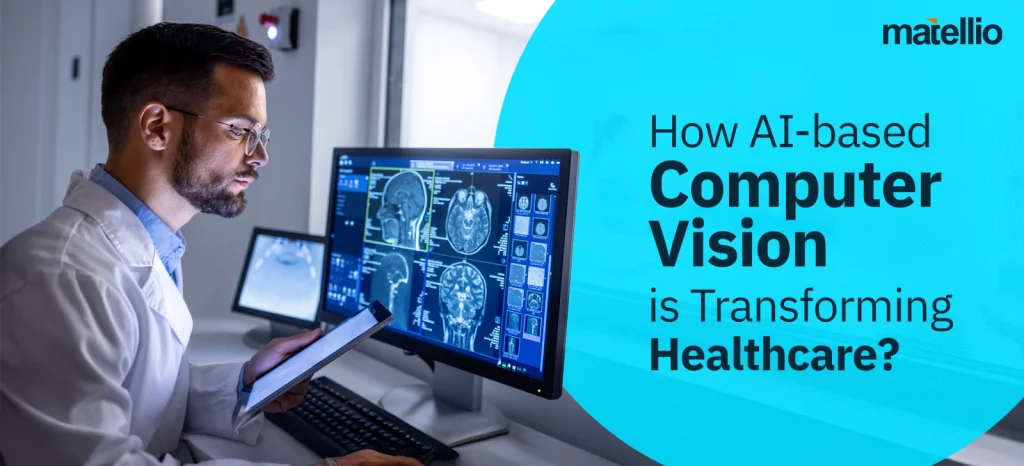
We understand that you don’t need another pitch about “the future of AI.” What you need is something that works now—something that understands your world, where:
- Your radiologists are burnt out.
- Your patient wait times are creeping up.
- Your teams are juggling outdated systems and data silos.
- And the budget? Always tight.
Well, healthcare leaders across the U.S. are dealing with the same pressures—and here’s what’s changing the game: computer vision in healthcare.
We’re talking about AI that can analyze X-rays in seconds, detect micro-level anomalies your clinicians can’t even see, and cut admin time in half. This isn’t about replacing people—it’s about helping them do their jobs better, faster, and with fewer mistakes.
And the numbers back it up: the computer vision in healthcare market is set to reach $11.5 billion by 2029, growing at 24% CAGR (Markets & Markets).
It’s no longer a nice-to-have. It’s a competitive edge—and one your peers are already investing in.
So, let’s break it all down. From real-world computer vision use cases in healthcare, to why Matellio is the partner of choice for AI integration services and computer vision for healthcare, this blog will walk you through everything you need to know—minus the tech jargon, minus the hype.
What is Computer Vision in Healthcare, Really?
If AI helps machines think, then computer vision in healthcare is what helps them see. But unlike a human eye that’s been learning since birth, computer vision needs to be trained—on thousands (sometimes millions) of visual examples—to recognize, analyze, and act on what it “sees.”
At its core, computer vision for healthcare is a form of artificial intelligence that processes medical images and video data to detect patterns, flag anomalies, and support decision-making. Whether it’s identifying tumors in CT scans, tracking surgical tools in real time, or monitoring patient vitals from a distance—AI in healthcare is evolving fast, and computer vision is leading the charge.
And we’re not just talking theory here. The computer vision in healthcare market is growing aggressively, projected to hit $11.5 billion by 2029, up from $3.9 billion in 2024 (Markets & Markets). That growth isn’t driven by hype—it’s driven by real results.
But how does this technology work in healthcare?
- Computer vision is trained to “see” like a human—but without fatigue, bias, or distractions.
- It uses advanced AI techniques like deep learning and convolutional neural networks (CNNs) to analyze images or videos.
- The system learns by being shown thousands of labeled examples—like “normal” vs. “abnormal” CT scans or healthy vs. irregular heart patterns.
- Over time, it starts recognizing these patterns on its own, just like a clinician does—but much faster.
- The more data it sees, the better it gets. This is called machine learning.
- Once trained, it can detect abnormalities in medical images, flag risky vital signs in real time, sort urgent cases for faster triage, and help reduce human error in diagnostics.
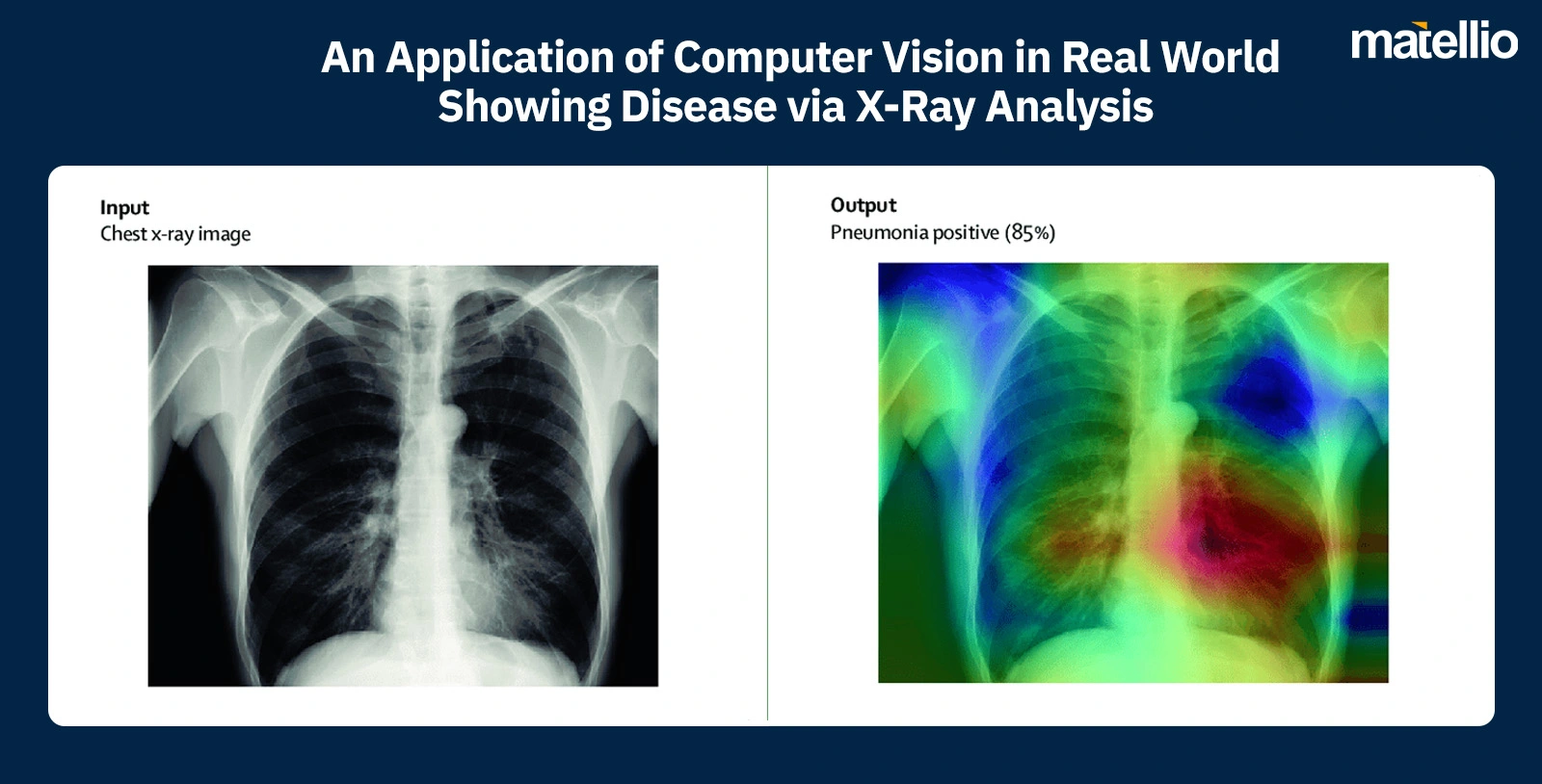 (Source: Research Gate)
(Source: Research Gate)
In short, computer vision for healthcare is like having a superhuman assistant with perfect memory and instant decision-making—right in your clinical workflow.
How Computer Vision in Healthcare is Quietly (and Powerfully) Transforming Care Delivery
Let’s talk real outcomes. Not theoretical AI, not pilot programs that never scale—but actual, proven applications of computer vision in healthcare that are helping hospitals streamline workflows, save lives, reduce errors, and stay compliant.
Here’s how decision-makers across the U.S. are already putting computer vision for healthcare to work—and how you can, too.
Precision Health Monitoring – Before It Becomes Critical
Blood loss during surgery. Silent symptoms of respiratory infections. Hidden health risks that don’t show up until it’s too late.
That’s where computer vision in healthcare shines. With real-time video feeds and trained AI models, it can track blood loss during surgeries like C-sections by analyzing sponge saturation and alerting the team when thresholds are crossed. It can also visually assess wound healing, body fat percentages, or diabetic foot ulcers over time by comparing medical images.
This isn’t just smart—it’s life-saving. No more guesswork. No more delays. Just timely, data-backed insights that support your clinical team without slowing them down.
UC San Diego Health used a similar AI-powered computer vision system to detect pneumonia in a patient—before any symptoms appeared—allowing the patient to be discharged early without ICU care.
Cell Counting That Accelerates Research and Precision Diagnostics
Remember when lab techs had to manually count red blood cells under a microscope? That process was invented over a century ago—and it’s still widely used today. But now, computer vision for healthcare has changed the game.
AI-powered models are trained to identify and count cell nuclei from microscopic images—faster and more accurately than the human eye ever could. With one GPU, hundreds of sample images can be analyzed in parallel, allowing researchers to test and validate new drug compounds at a scale never before possible.
That means faster time to discovery. Lower R&D costs. And far fewer errors in diagnostic workflows.
Labs and R&D centers across the U.S. are integrating computer vision into high-throughput screening. While specific hospital case studies are still emerging, this tech has already gone mainstream in drug development pipelines and research hospitals working in oncology and pathology.
Smarter Surgical Records & Instrument Tracking That Actually Works
Surgical errors are a quiet crisis in hospitals. Every year, 4,500 to 6,000 surgical tools are accidentally left inside patients during operations in the U.S. Traditional tracking systems and manual record-keeping just don’t cut it anymore.
Enter computer vision in healthcare applications.
Computer vision cameras, combined with deep learning models, can now monitor surgeries in real time—tracking every tool, every step, every moment. This technology helps prevent retained surgical items, ensure correct draping and sterilization protocols, and automatically update digital surgical logs.
Not only does this reduce risk, but it also supports compliance and saves anesthesiologists and surgical nurses’ valuable time. Paired with generative AI development services, this system becomes part of a smarter OR that supports your surgical team instead of adding more manual work.
Leading facilities are now testing this tech in pilot ORs, with early adopters like Cedars-Sinai Medical Center already using AI platforms (e.g., Aidoc) for integrated imaging and surgery support.
Turning Flat Scans into 3D Precision with Medical Imaging
Radiologists and surgeons make life-saving decisions from 2D CT and MRI scans—but those flat images often lack depth and clarity. With computer vision in healthcare, those scans can be converted into interactive 3D models, giving clinicians a comprehensive view of complex anatomy—heart valves, brain structures, tumor locations, and more.
This dramatically improves diagnostic accuracy, surgical planning, and even patient communication.
For example, at University Health’s Breast Center in San Antonio, AI highlights suspicious areas in mammograms, helping radiologists identify potential cancers faster and with greater accuracy.
The application of computer vision in healthcare imaging workflows isn’t just better—it’s becoming essential.
Looking for the Perfect Use Case of Computer Vision for Your Facility? Contact Our Experts Over a Free 30-minute Call!
Real-Time Patient Identification to Prevent Catastrophic Mistakes
Patient misidentification is still shockingly common—and dangerously costly. Between 2013 and 2015, 7,600 patient misidentification incidents were reported in 181 U.S. hospitals. Nearly 9% led to serious injury or death.
That’s where computer vision for healthcare changes everything.
With face authentication powered by computer vision, hospitals can verify patients during admission, surgery, medication delivery, and discharge. It syncs with MRNs and digital health records to ensure the right patient is getting the right care—every time.
Monmouth Medical Center is using computer vision to detect early signs of lymphedema in breast cancer patients, tracking visual indicators that could otherwise go unnoticed.
Full case
AI-Powered Image Analysis That Saves Lives in Seconds
When dealing with stroke, trauma, or neurological conditions, every second counts. In New York, a hospital implemented a computer vision in healthcare solution that analyzed CT scans and diagnosed neurological disorders in just 1.2 seconds—150x faster than traditional workflows (NCBI).
Imagine what that speed could mean in your ER or ICU.
Trained models can scan imaging data for patterns, anomalies, and early signs of disease—flagging urgent cases for radiologist review without delay. This drastically improves triage workflows, reduces diagnostic delays, and helps your team deliver better outcomes with less burnout.
These are the kind of AI trends in healthcare that aren’t optional anymore—they’re survival strategies.
Automated Report Generation That Lets Doctors Be Doctors
What’s one thing every doctor wishes they had more of? Time.
With computer vision services combined with natural language generation, hospitals can now automatically generate first-draft radiology reports based on image analysis. These reports are based on trained models using past diagnoses, outcomes, and imaging data.
Radiologists can then review and validate the results in a fraction of the time it would take to start from scratch. That’s not just a tech upgrade—it’s a relief valve for overworked teams.
The Future Is Now: Computer Vision in Healthcare Is Transforming the Industry
Computer vision in healthcare is no longer a futuristic concept; it’s a present-day reality that’s reshaping patient care and operational efficiency. Here’s why this technology is becoming indispensable:
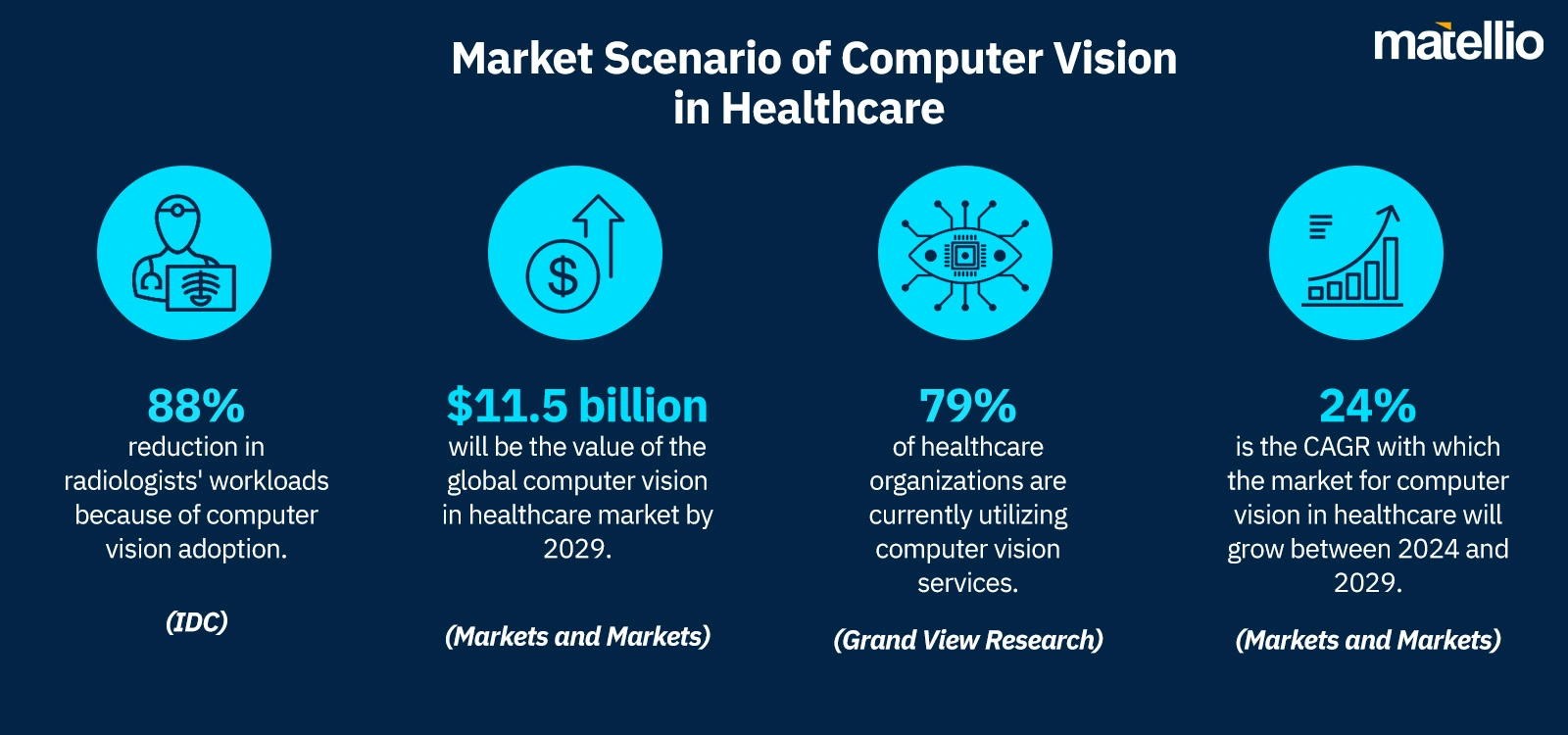
The integration of computer vision in healthcare is not just a technological upgrade; it’s a strategic imperative. Healthcare providers who adopt these solutions can expect:
- Enhanced diagnostic accuracy
- Streamlined operational workflows
- Improved patient outcomes
- Competitive advantage in a rapidly evolving industry
To enjoy all these, you will need a trusted digital transformation consultancy having expertise in computer vision and healthcare technology consulting. That’s where Matellio comes in!
Let’s Begin Your Computer Vision Project with a Free 30-minute Consultation. Book Your Slot!
Why Matellio? Because You Don’t Just Need AI—You Need the Right Partner
You’ve seen the impact. You’ve read the stats. You now know that computer vision in healthcare isn’t tomorrow’s tech—it’s today’s advantage. The only question left is: Who’s going to build it for you?
Here’s the truth—technology alone won’t transform your hospital or clinic. But the right partner will.
That’s why top healthcare leaders choose Matellio.
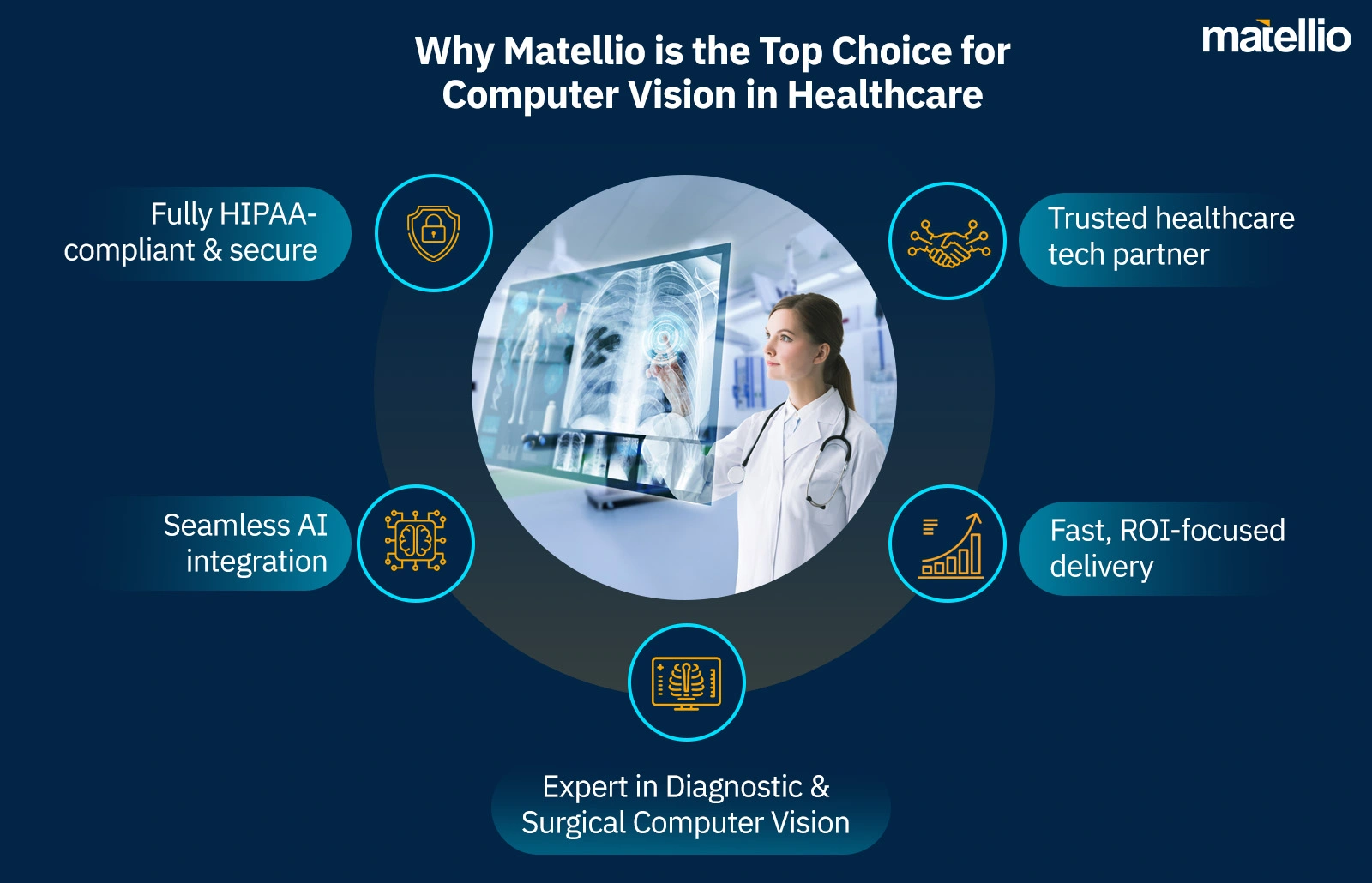
We don’t sell code. We deliver transformation. Whether you’re looking to explore new computer vision in healthcare applications, scale high-impact AI trends in healthcare, or simply want a roadmap for success—Matellio is the healthcare technology consulting team that shows up, builds smart, and makes it real.
Let’s build the future of healthcare together—with computer vision for healthcare that works. Schedule a Free 30-minute Consultation


